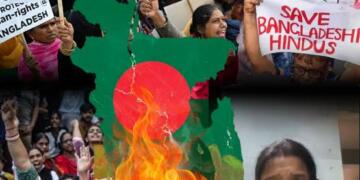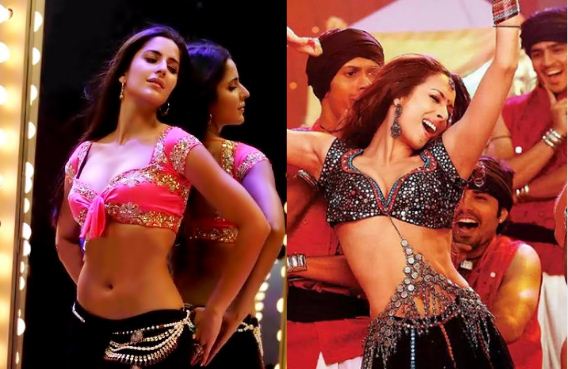Historically, cinema across the world has been afflicted with the “male gaze”. What is the male gaze, you might ask? It’s simple, really. The ‘male gaze’ refers to what a man views on a screen. This has transformed from being a male gaze, to becoming what is served to a man on the screen. So, the male gaze is the act of depicting women and the world, in the visual arts and in literature, from a masculine perspective that presents women as mere sexual objects. Such is the depiction of women in films that female audiences view the content secondarily themselves – since the target audience is almost always the man.
But hey! Don’t you think the world has come a long way since such theories were postulated? But you see, showing women as sexual objects sells. It helps producers mint money. It’s good for business. So, equality and women empowerment be damned! Filmmakers continue to show women as objects meant to satiate a perpetually unsatisfied man’s desires.
The ‘Feminist Film Theory’ attacked this trend. The theory criticizes classical cinema for its stereotyped representation of women. It champions for women to take the lead role. It calls for the film industry to be broken down and rebuilt on equitable terms. Have filmmakers around the world learnt their lessons? To a great extent.
Have Indian filmmakers – from the abomination of an industry called Bollywood – learnt anything? Not really.
Bollywood’s Women Problem
According to a UN-sponsored global study of female characters in popular films across the world, India tops the chart in showing attractive women in its movies and as much as 35 percent of these female characters are shown with some nudity.
Indian films, the study finds, have a significantly higher prevalence of sexualisation of female characters and the movies score low in depicting women in significant speaking roles and as
engineers and scientists. At 25.2 percent, India tops the chart in showing attractive females in its movies. Female directors, writers and producers in Bollywood, meanwhile, remain an oasis in a scorched desert.
The Depiction Conundrum
How have women historically been depicted in Indian films? Helpless victims of molestation, eve-teasing and assault, right? That is until the famed ‘hero’ swoops in and saves his princess, of course. By far, women have been shown being saved by male lead characters, or them becoming the reason why a male protagonist embarks on a ruthless revenge campaign against the evil-doers.
When the Indian film industry did not show women getting molested or avenged, it made ample use of their abilities to shake a leg on a commoditising song, or what in India is referred to as the ‘item dance’. The ‘item’, of course, is the woman – dancing to the tunes of a director without any autonomy or liberty to say ‘no’.
Times were different in the 20th century. But 21st-century “item dances” like ‘MunniBadnaam’, ‘ChikniChameli’, ‘Sheila Ki Jawaani’, ‘Fevicol Se’, among others continue to haunt us. These songs have even gone on to win awards. Indian film awards are worthless, of course – most of them are even bought. But the fundamental issue of women being depicted as sexual objects has actually been awarded not very long ago! Intriguingly, though, Bollywood today claims to champion the cause of feminism and women empowerment.
Bollywood’s Hypocrisy
Isn’t everyone in Bollywood a ‘feminist’? They are. Or that is they want us to believe, at the very least. Who cares if they are all closeted mind-players who feed Indian audiences sexualised nonsense only to mint more money? At least they claim to be ‘feminists’, right? The keyword here is the claim.
Claiming to be feminists will not fetch them cash, unfortunately. And one does need cash to buy those awards, right? So, while everyone in Bollywood is a champion of women empowerment, they are all also guilty of showing women in poor light, objectifying them and portraying them as mere objects of sexual appeasement.
Can female actors shrug the responsibility of fuelling such anti-woman behaviour within Bollywood? No. They absolutely cannot. As Bollywood objectifies women, female actors within the industry continue to mutely spectate. In fact, they are even willing participants in such portrayals – all while claiming to be the voice of an ordinary Indian woman.
Part-time actor cum full-time activist Swara Bhaskar, for example, is a woman with a guilty conscience, like many others in Bollywood.
In 2014, she was quoted by the Hindu as saying, “I turn down vulgar film offers and fairness cream advertisements but there are times when I have to make compromises too. I definitely had a problem with the misogyny in my film Raanjhanaa and pointed that out to the writers. Even Prem Ratan Dhan Payo operated within a socially conservative world. But then I made up for it by doing Tanu Weds Manu, I am doing Nil Battey Sannata which touches upon the issue of education. Up next is Anarkali Aarawali where I play an orchestra performer who sings sexually explicit songs.”
So, not only has Swara Bhaskar been an active participant in Bollywood’s orgy-fest of misogyny, but also thinks that playing the role of an orchestra performer who sings sex-songs is somehow empowering for women.
The problem of Bollywood is that it is filled with phoney-activists who are actually willing participants in the industry’s crimes. For the systemic misogyny of Bollywood to be uprooted – the industry as it stands – must be demolished.
































Anyone in 2022 still cares about the Dawood industry? LoL! 😂😂😂